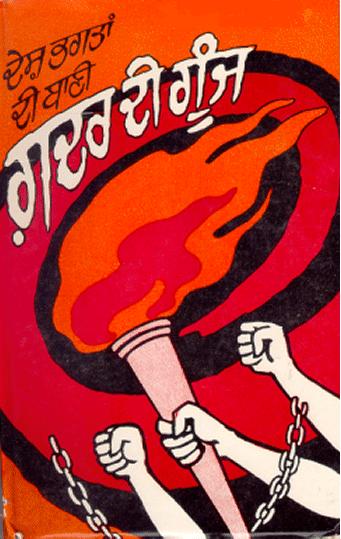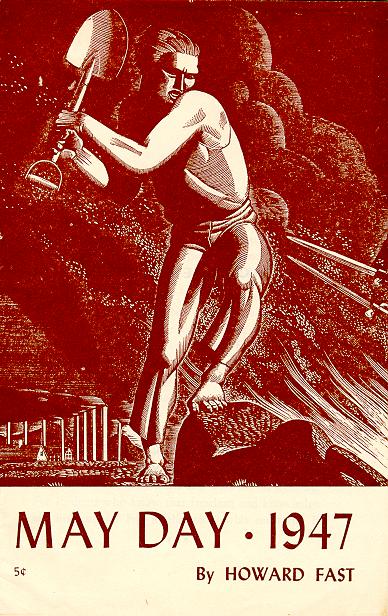
जब से मनुष्य ने अपने आप को प्रकृति से अलग किया, तभी से उसका प्रकृति के साथ वार्तालाप जारी है। इसी वार्तालाप की देन है-दर्शन शास्त्र, विज्ञान, समाजशास्त्र तथा साहित्य-कला जैसे अन्य अनुशासन। वर्ग समाज ने निश्चय ही इस वार्तालाप को भ्रष्ट किया है। जिसे आप हर अनुशासन में दो पोलो के निर्माण के रुप में देख सकते है। साहित्य में यह ‘कला कला के लिए’ और ‘कला समाज के लिए’ के रुप में अपने तीखे रुपों में दिखता है।
इसी वार्तालाप के रुप में जीवन के बारे में भी विचार शुरु हुआ। जीवन क्या है? जीवन का प्राथमिक रुप पदार्थ क्या है?
विज्ञान ने कालान्तर में पदार्थ के विशाल रुप [macro] और उसके सूक्ष्म रुप [micro] की पड़ताल शुरु की।
ग्रीक दार्शनिकों ने सबसे पहले पदार्थ के इन दोनो रुपों के बारे में अपने व्यवस्थित विचार रखे। और वैज्ञानिक खोजो के लिए एक तरह से उत्प्रेरक का काम किया। प्रकृति के बारे में प्राचीन ग्रीक दार्शनिक हेरोक्लिटस का यह सूत्र वाक्य कि you could not step twice in the same river बहुत समय तक अन्वेषकों की प्रेरणा बने रहे।
मध्यकाल में धर्म सभी वैज्ञानिक व सामाजिक अनुशासनों पर छा गया। वैज्ञानिक व सामाजिक अनुसंधान पूरी तरह रुक गये।
रेनेसां [Renaissance] ने विज्ञान को धर्म के चंगुल से आजाद कराया। हालांकि इसके लिए उसे काफी कीमत चुकानी पड़ी। [ब्रूनो, गैलीलियो का इतिहास आप जानते ही है।]
और विज्ञान के भीम डग एक बार फिर आगे बढ़ चले।
न्यूटन ने पहली बार पदार्थ के बृहद रुप के बारे में कुछ निश्चित नियमों की खोज की,जिसे ‘न्यूटोनियन माडल’ कहा गया। लेकिन आइन्सटीन और हाइजेनबर्ग तक आते आते यह साफ हो गया कि पदार्थ के सूक्ष्म रुपों पर यानी ‘सबएटामिक स्तर’ पर न्यूटन के नियम लागू नही होते। न्यूटन के निश्चितता [deterministic], के माडल के खिलाफ हाइजेनबर्ग का अनिश्चितता [uncertainty या chaos], का माडल खड़ा हो गया। कुछ लोग अनिश्चितता के सिद्धान्त को सामाजिक विज्ञान पर लागू करते हुए ऐलान करने लगे कि अब सबकुछ अनिश्चित है। और समाज किसी नियम से नही चलता । इसलिए इसे बदलने की बात करना बेमानी है। उत्तर आधुनिकतावाद, उत्तर संरचनावाद जैसे वादों को ‘वैज्ञानिक तर्क’ यही से मिल रहे थे ।
इसी बीच 1984 में llya Prigogine और Isabelle Stengers की एक महत्वपूर्ण किताब आयी – Order out of chaos
[llya Prigogine को 1977 में थर्मोडायनेमिक्स पर उनके काम के लिए नोबेल पुरस्कार मिल चुका था।]
इसमें लेखक ने वैज्ञानिक प्रयोगों से यह साबित किया कि निश्चितता और अनिश्चतता कोई अलग अलग एक दूसरे की विरोधी कैटेगरी नही है बल्कि दोनो द्वन्दात्मक [Dialectical] तरीके से एक दूसरे से जुड़े हुए है। उन्होने बताया कि हर तरह की अनिश्चितता मे एक निश्चितता विद्यमान रहती है। यानी हर तरह के chaos में एक order भी होता है। एक तरह से उन्होने न्यूटन और हाइजेनबर्ग के सिद्धान्त को ऊंचे स्तर पर dialectically फ्यूज करा दिया। इसके बाद अनेक जटिल दार्शनिक कैटेगरी जैसे necessity and chance, quantity and quality, appearance and essence, finite and infinite, part and whole, certainty and uncertainty आदि की ब्याख्या आसान हो गयी।
समाज विज्ञान के लिहाज से देखे तो इसका बहुत महत्व है। समाज विज्ञान के अनिश्चित से दिखते नियम भी कुछ निश्चित नियमो की तरफ ले जाते है। मनुष्य अपने सामाजिक प्रयोगो और सामाजिक ज्ञान से उन्हे जान सकता है और उन नियमों के हिसाब से अपने समाज को बदल भी सकता है।
यह किताब बहुत दिनो से ‘आउट आफ प्रिन्ट’ है। भला हो ‘कापी लेफ्ट'[copy left] वालो का, जिनके सौजन्य से यह किताब मुझे उपलब्ध हो पायी। यह महत्वपूर्ण किताब मै आप से भी शेयर कर रही हूं।
इसकी भूमिका प्रसिद्ध विचारक और Future shock के लेखक एलविन टाफलर ने लिखी है। भूमिका भी उतनी ही विचारोत्तेजक है जितनी कि किताब [ORDER OUT OF CHAOS] ।
पूरी किताब आप यहां से Order_out_of_Chaos डाउनलोड कर सकते है।
अब पढ़िए भूमिका-
SCIENCE AND CHANGE
by Alvin Toffler
One of the most highly developed skills in contemporary Western
civilization is dissection: the split-up of problems into their
smallest possible components. We are good at it. So good, we
often forget to put the pieces back together again.
This skill is perhaps most finely honed in science. There we
not only routinely break problems down into bite-sized chunks
and mini-chunks, we then very often isolate each one from its
environment by means of a useful trick. We say ceteris paribus-
all other things being equal. In this way we can ignore
the complex interactions between our problem and the rest of
the universe.
llya Prigogine, who won the Nobel Prize in 1977 for his
work on the thermodynamics of nonequilibrium systems , is
net satisfied, however, with merely taking things apart. He has
spent the better part of a lifetime trying to “put the pieces
back together again”-the pieces in this case being biology
and physics, necessity and chance, science and humanity.
Born in Russia in 1917 and raised in Belgium since the age
of ten, Prigogine is a compact man with gray hair, cleanly chiseled
features, and a laserlike intensity. Deeply interested in
archaeology, art, and history, he brings to science a remarkable
polymathic mind. He lives with his engineer-wife, Marin
a , and h i s son , Pas c a l , i n B r u s s e l s , where a crossdisciplinary
team is busy exploring t he i mplications of his
ideas in fields as disparate as the social behavior of ant colonies,
diffusion reactions in chemical systems and dissipative
processes in quantum field theory.
He spends part of each year at the Ilya Prigogine Center for
Statistical Mechanics and Thermodynamics of the University
of Texas in Austin. To his evident delight and surprise, he was
awarded the Nobel• Prize for his work on “dissipative structures”
arising out of nonlinear processes in nonequilibrium
systems. The coauthor of this volume, Isabelle Stengers, is a
philosopher, chemist, and historian of science who served for
a time as part of Prigogine ‘s Brussels team. She now lives in
Paris and is associated with the Musee de Ia Villette.
In Order Out of Chaos they have given us a landmark-a
work that is contentious and mind-energizing, a book filled
with flashing insights that subvert many of our most basic assumptions
and suggest fresh ways to think about them.
Under the title La nouvelle alliance, its appearance i n
France in 1979 triggered a marvelous scientific free-for-all
among prestigious intellectuals in fields as diverse as entomology
and literary criticism.
It is a measure of America’s insularity and cultural arrogance
that this book, which is either published or about to
be published in twelve languages, has taken so long to cross
the Atlantic. The delay carries with it a silver lining, however,
in that this edition includes Prigogine ‘s newest findings, particularly
with respect to the Second Law of thermodynamics,
which he sets into a fresh perspective .
For all these reasons, Order Out of Chaos is more than just
another book: It is a lever for changing science itself, for compelling
us to reexamine its goals, its methods, its epistemology-
its world view. Indeed, this book can serve as a symbol
of today’s historic transformation in science-one that no informed
person can afford to ignore.
Some scholars picture science as driven by its own internal
logic, developing according to its own laws in splendid isolation
from the world around it. Yet many scientific hypotheses ,
theories, metaphors, and models (not t o mention the choices
made by scientists either to study or to ignore various problems)
are shaped by economic, cultural, and political forces
• operating outside the laboratory.
I do not mean to suggest too neat a parallel between the nature
of society and the reigning scientific world view or “paradigm.”
Still less would I relegate science to some “superstructure
mounted atop a socioeconomic “base,” as Marxists are wont to
do. But science is not an “independent variable.” It is an open
system embedded in society and linked to it by very dense feedback
loops. It is powerfully influenced by its external environ
ment, and, in a general way, its development is shaped by cultural
receptivity to its dominant ideas.
Take that body of ideas that came together in the seventeenth
and eighteenth centuries under the heading of “classical
science” or ” Newtonianism . ” They pictured a world in
which every event was determined by initial conditions that
were, at least in principle, determinable with precision. It was
a world in which chance played no part, in which all the pieces
came together like cogs in a cosmic machine.
The acceptance of this mechanistic view coincided with the
rise of a factory civilization. And divine dice-shooting seems
hardly enough to account for the fact that the Age of the Machine
enthusiasticall y e mbraced scientific theories that pictured
the entire universe as a machine.
This view of the world led Laplace to his famous claim that,
given enough facts, we could not merely predict the future but
retrodict the past. And this image of a simple, uniform; mechanical
universe not only shaped the development of science,
it also spilled over into many other fields. It influenced the
framers of the American Constitution to create a machine for
governing, its checks and balances clicking like parts of a
clock. Metternich, when he rode forth to create his balance of
power in Europe, carried a copy of Laplace’s writings in his
baggage. And the dramatic spread of factory civilization, with
its vast clanking machine s , its heroic engineering breakthroughs
, the rise of the railroad , and new industries such as
steel, textile, and auto, seemed merely to confirm the image of
the universe as an engineer’s Tinkertoy.
Today , however, the Age of the Machine is screeching to a
halt, if ages can screech-and ours certainly seems to. And
the decline of the industrial age forces us to confront the painful
limitations of the machine model of reality.
Of course, most of these limitations are not freshly discovered.
The notion that the world is a clockwork, the planets
timelessly orbiting, all systems operating deterministically in
equilibrium, all subject to universal laws that an outside observer
could discover-this model has come under withering
fire ever since it first arose.
In the early nineteenth century, thermod ynamics chal lenged
the timelessness implied i n the mechanistic image of
the universe . If the world was a big machine, the thermodynamicists
declared, it was running down , its useful energy leaking out. It could not go on forever, and time ,
therefore, took on a new meaning. Darwin’s followers soon
introduced a contradictory thought: The world-machine might
be running down, losing energy and organization, but biological
systems, at least, were running up, becoming more, not
less, organized.
By the early twentieth century, Einstein had come along to
put the observer back into the system: The machine looked
different-indeed, for all practical purposes it was differentdepending
upon where you stood within it. But it was still a
deterministic machine, and God did not throw dice. Next, the
quantum people and the uncertainty folks attacked the model
with pickaxes, sledgehammers, and sticks of dynamite.
Nevertheless, despite all the ifs, ands, and buts, it remains
fair to say, as Prigogine and Stengers do, that the machine paradigm
is still the “reference point” for physics and the core
model of science in general. Indeed, so powerful is its continuing
influence that much of social science, and especially
economics, remains under its spell.
The importance of this book is not simply that it uses original
arguments to challenge the Newtonian model, but also
that it shows how the still valid, though much limited, claims
of Newtonianism might fit compatibly into a larger scientific
image of reality. It argues that the old “universal laws” are not
universal at all, but apply only to local regions of reality. And
these happen to be the regions to which science has devoted
the most effort.
Thus, in broad-stroke terms, Prigogine and Stengers argue
that traditional science in the Age of the Machine tended to
emphasize stability, order, uniformity, and equilibrium. It concerned
itself mostly with closed systems and linear relationships
in which small inputs uniformly yield small results.
With the transition from an industrial society based on
heavy inputs of energy, capital, and labor to a high-technology
society in which information and innovation are the critical
resources, it is not surprising that new scientific world models
should appear.
What makes the Prigoginian paradigm especially interesting
is that it shifts attention to those aspects of reality that characterize
today’s accelerated social change: disorder, instability,
diversity, disequilibrium, nonlinear relationships (in which
small inputs can trigger massive consequences), and temporality-
a heightened sensitivity to the flows of time.
The work of Ilya Prigogine and his colleagues in the socalled
” Brussels school” may well represent the next revolution
in science as it enters into a new dialogue not merely with
nature, but with society itself.
The ideas of the Brussels school , based heavily on Pr igogine’s
work, add up to a novel, comprehensive theory of
change.
Summed up and simplified, they hold that while some parts of
the universe may operate like machines, these are closed systems,
and closed systems, at best, form only a small part of the physical
universe. Most phenomena of interest to us are, in fact, open
systems, exchanging energy or matter (and, one might add, information)
with their environment. Surely biological and social systems
are open, which means that the attempt to understand them
in mechanistic terms is doomed to failure.
This suggests , moreover, that most of reality, instead of
being orderly, stable, and equilibria!, is seething and bubbling
with change, disorder, and process.
In Pr igoginian ter m s , all systems contain subs ystem s ,
which are continuall y “fluctuating.” A t times, a single fluctuation
or a combination of them may become so powerful, as a
result of positive feedback, that it shatters the preexisting organization.
At this revolutionary moment-the authors call it
a “singular moment” or a “bifurcation point”-it is inherently
impossible to deter mine in advance which direction change
will take: whether the system will disintegrate into “chaos” or
leap to a new, more differentiated , higher level of “order” or
organization, which they call a “dissipative structure.” (Such
physical or chemical structures are termed dissipative because,
compared with the simpler structures they replace , they
require more energy to sustain them.)
One of the key controver sies surrounding this concept has
to do with Prigogine’s insistence that order and organization
can actually arise “spontaneously” out of disorder and chaos
through a process of “self-organization . ”
To grasp this extremely powerful idea. we first need to make
a distinction between systems that are in “equilibrium,” systems that are “near equilibrium , ” and systems that are “far
from equilibrium. ”
Imagine a primitive tribe . If its birthrate and death rate are
equal, the size of the population remains stable. Assuming adequate
food and other resources, the tribe forms part of a local
system in ecological equilibrium.
Now increase the birthrate . A few additional births (without
an equivalent number of deaths) might have little effect. The
system may move to a near-equilibria! state . Nothing much
happens. It takes a big jolt to produce big consequences in
systems that are in equilibria] or near-equilibria] states.
But if the birthrate should suddenly soar, the system is
pushed into a far-from-equilibrium condition, and here nonlinear
relationships prevail. In this state , systems do strange
things. They become inordinately sensitive to external influences.
Small inputs yield huge, startling effects. The entire
system may reorganize itself in ways that strike us as bizarre.
Examples of such self-reorganization abound in Order Out
of Chaos. Heat moving evenly through a liquid suddenly, at a
certain threshold, converts into a convection current that radically
reorganizes the liquid, and millions of molecules , as if on
cue , suddenly form themselves into hexagonal cells.
Even more spectacular are the “chemical clocks” described
by Prigogine and Stengers. Imagine a million white ping-pong
balls mixed at random with a million black ones, bouncing
around chaotically in a tank with a glass window in it. Most of
the time, the mass seen through the window would appear to
be gray, but now and then, at irregular moments, the sample
seen through the glass might seem black or white, depending
on the distribution of the balls at that moment in the vicinity of
the window.
Now imagine that suddenly the window goes all white , then
all black, then all white again, and on and on, changing its
color completely at fixed intervals-like a clock ticking.
Why do all the white balls and all the black ones suddenly
organize themselves to change color in time with one another?
By all the traditional rules, this should not happen at all. Yet, if
we leave ping-pong behind and look at molecules in certain chemical
reactions, we find that precisely such a self-organization or
ordering can and does occur–despite what classical physics and
the probability theories of Boltzmann tell us.
In far-from-equili brium situations other seemingly
taneous, often dramatic reorganizations of matter within time
and space also take place. And if we begin thinking in terms of
two or three dimensions, the number and variety of such pos•
sible structures become very great.
Now add to this an additional discovery. Imagine a situation
in which a chemical or other reaction produces an enzyme
whose presence then encourages further production of the
same enzyme. This is an example of what computer scientists
would call a positive-feedback loop. In chemistry it is called
“auto-catalysis. ” Such situations are rare in inorganic chemis•
try. But in recent decades the molecular biologists have found
that such loops (along with inhibitory or “negative” feedback
and more complicated “cross-catalytic” processes) are the
very stuff of life itself. Such processes help explain how we go
from little lumps of DNA to complex living organisms.
More generall y, therefore , in far-from-equilibrium conditions
we find that very small perturbations or fluctuations can
become amplified into gigantic , structure-breaking waves .
And this sheds light o n all sorts of “qualitative” o r “revolu•
tionary” change processes. When one combines the new insights
gained from studying far-from-equilibrium states and
nonlinear processes, along with these complicated feedback
systems, a whole new approach is opened that makes it possible
to relate the so-called hard sciences to the softer sciences
of life-and perhaps even to social processes as well.
(Such findings have at least analogical significance for social,
economic or political realities. Words like “revolution, ”
“economic crash,” “technological upheaval ,” and “paradigm
shift” all take on new shades of meaning when we begin thinking
of them in terms of fluctuations , feedback amplification,
dissipative structures, bifurcations, and the rest of the Prigoginian
conceptual vocabulary.) It is these panoramic vistas that
are opened to us by Order Out of Chaos.
Beyond this, there is the even more puzzling, pervasive is•
sue of time.
Part of today’s vast revolution in both science and culture is
a reconsideration of time, and it is important enough to merit a
brief digression here before returning to Prigogine’s role in it.
Take history, for example. One of the great contributions to
historiography has been Braudel’s division of time into three
scales-” geographical time, ” in which events occur over the
course of aeons ; the much shorter “social time” scale by
which economies, states, and civilizations are measured; and
the even shorter scale of “individual time”-the history of
human events.
In social science, time remains a largely unmapped terrain.
Anthropology has taught us that cultures differ sharply in the
way they conceive of time. For some, time is cyclical-history
endlessly recurrent. For other cultures, our own included,
time is a highway stretched between past and future, and people
or whole societies march along it. In still other cultures,
human lives are seen as stationary in time ; the future advances
toward us, instead of us toward it.
Each society, as I ‘ ve written elsewhere, betrays its own
characteristic “time bias”-the degree to which it places emphasis
on past, present, or future. One lives in the past. Another
may be obsessed with the future.
Moreover, each culture and each person tends to think in
terms of “time horizons . ” Some of us think only of the immediate-
the now. Politicians, for example, are often criticized
for seeking only immediate, short-term results. Their time
horizon is said to be influenced by the date of the next election.
Others among us plan for the long term. These differing
time horizons are an overlooked source of social and political
friction-perhaps among the most important.
B ut despite the growing recognition that cultural conceptions
of time differ, the social sciences have developed little
in the way of a coherent theory of time. Such a theory might
reach across many disciplines, from politics to group dynamics
and interpersonal psychology. It might, for example, take
account of what, in Future Shock, I called “durational expectancies”-
our culturally induced assumptions about how long
certain processes are supposed to take.
We learn very early, for example, that brushing one’s teeth
should last only a few minutes, not an entire morning, or that
when Daddy leaves for work, he is likely to be gone approximately
eight hours, or that a “mealtime” may last a few minutes
or hours, but never a year. (Television, with its division of
the day into fixed thirty- or sixty-minute intervals , subtly
shapes our notions of duration. Thus we normally expect the
hero in a melodrama to get the girl or find the money or win
the war in the last five minutes. In the United States we expect
commercials to break in at certain intervals .) Our minds are
filled with such durational assumptions. Those of children are
much different from those of fully socialized adults, and here
again the differences are a source of conflict.
Moreover, c h ildren in an i ndustrial society are ” time
trained”-they learn to read the clock, and they learn to distinguish
even quite small slices of time, as when their parents
tell them, ” You’ve only got three more minutes till bedtime!”
These s harply honed temporal skills are often absent in
slower-moving agrarian societies that require less precision in
daily scheduling than our time-obsessed society.
Such concepts , which fit within the social and individual
time scales of B raude!, have never been systematically developed
in the social sciences. Nor have they, in any significant
way, been articulated with our scientific theories of time,
even though they are necessarily connected with our assumptions
about physical reality. And this brings us back to Prigogine,
who has been fascinated by the concept of time since
boyhood. He once said to me that, as a young student, he was
struck by a grand contradiction in the way science viewed
time, and this contradiction has been the source of his life’s
work ever since.
In the world model constructed by Newton and his followers
, time was an afterthought. A moment, whether in the
present, past, or future, was assumed to be exactly like any
other moment. The endless cycling of the planets-indeed,
the operations of a clock or a simple machine-can, in principle
, go either backward or forward in time without altering the
basics of the system. For this reason, scientists refer to time in
Newtonian systems as “reversible . ”
In the nineteenth century, however, a s the main focus of
physics shifted from dynamics to thermodynamics and the
Second Law of thermodynamics was proclaimed, time suddenly
became a central concern. For, according to the Second
Law, there is an inescapable loss of energy in the universe.
And , if the world machine is really running down and approaching
the heat death, then it follows that one moment is no
longer exactly like the last. You cannot run the universe backward
to make up for entropy. Events over the long term cannot
replay themselve s . A nd this means that there is a directionality
or, as Eddington later called it, an “arrow” in time.
The whole universe is, in fact, aging. And, in turn, if this is
true, time is a one-way street. It is no longer reversible, but
irreversible.
In short, with the rise of thermodynamics, science split
down the middle with respect to time. Worse yet, even those
who saw time as irreversible soon also split into two camps.
After all, as energy leaked out of the system, its ability to
sustain organized structures weakened , and these, in turn,
broke down into less organized, hence more random elements.
But it is precisely organization that gives any system
internal diversity. Hence, as entropy drained the system of energy,
it also reduced the differences in it. Thus the Second
Law pointed toward an increasingly homogeneous-and, from
the human point of view, pessimistic-future.
Imagine the problems introduced by Darwin and his followers!
For evolution, far from pointing toward reduced organization
and d iversity, points i n the opposite direction.
Evolution proceeds from simple to complex , from ” lower” to
“higher” forms of life , from undifferentiated to differentiated
structures. And, from a human point of view, all this is quite
optimistic. The universe gets “better” organized as it ages,
continually advancing to a higher level as time sweeps by.
In this sense, scientific views of time may be summed up as
a contradiction within a contradiction.
It is these paradoxes that Prigogine and Stengers set out to
illuminate, asking, “What is the specific structure of dynamic
systems which permits them to ‘distinguish’ between past and
future? What is the minimum complexity involved?”
The answer, for them , is that time makes its appearance
with randomness: “Only when a system behaves in a sufficiently
random way may the difference between past and future
, and therefore irreversibility, enter its description. ”
I n classical or mechanistic science, events begin with “initial
conditions , ” and their atoms or particles follow “world
lines” or trajectories. These can be traced either backward
into the past or forward into the future. This is just the opposite
of certain chemical reactions, for example, in which two
liquids poured into the same pot diffuse until the mixture is
uniform or homogeneous . These liquids do not de-diffuse
themselves. At each moment of time the mixture is different,
the entire process is “time-oriented. ”
For classical science , at least i n its early stages , such proxxi
cesses were regarded as anomalie s , peculiarities that arose
from highly unlikely initial conditions.
It is Prigogine and Stengers’ thesis that such time-dependent,
one-way processes are not merely aberrations or deviations
from a world in which time is irreversible. If anything,
the opposite might be true, and it is reversible time, associated
with “closed systems” (if such , indeed , exist in reality), that
may well be the rare or aberrant phenomenon.
What is more , irreversible processes are the source of
order-hence the title Order Out of Chaos. It is the processes
associated with randomness, openness , that lead to higher levels
of organization, such as dissipative structures.
Indeed, one of the key themes of this book is its striking
reinterpretation of the Second Law of thermodynamics. For
according to the authors, entropy is not merely a downward
slide toward disorganization. Under certain conditions, entropy
itself becomes the progenitor of order.
What the authors are proposing, therefore, is a vast synthesis
that embraces both reversible and irreversible time, and
shows how they relate to one another, not merely at the level of
macroscopic phenomena, but at the most minute level as well.
It is a breathtaking attempt at “putting the pieces back together
again. ” The argument is complex , and at times beyond
easy reach of the lay reader. But it flashes with fresh insight
and suggests a coherent way to relate seemingl y unconnected-
even contradictory-philosophical concepts.
Here we begin to glimpse, in full richness, the monumental
synthesis proposed in these pages. By insisting that irreversible
time is not a mere aberration, but a characteristic of much
of the universe, they subvert classical dynamics . For Prigogine
and Stengers, it is not a case of either/or. Of course,
reversibility still applies (at least for sufficiently long times)but
in closed systems only. Irreversibility applies to the rest of
the universe.
Prigogine and Stengers also undermine conventional views
of thermodynamics by showing that, under nonequilibrium
conditions , at least , entropy may produce , rather than degrade,
order, organization-and therefore life .
I f this i s so, then entropy, too, loses its either/or character.
Whi l e c ertai n systems run down , other s ystems simultaneously
evolve and grow more coherent. This mutualistic,
nonexclusive view makes it possible for biology and physics to
coexist rather than merely contradict one another.
Finally, yet another profound synthesis is implied-a new
relationship between chance and necessity.
The role of happenstance in the affairs of the universe has
been debated, no doubt, since the first Paleolithic warrior accidently
tripped over a rock. In the Old Testament, God’s will
is sovereign, and He not only controls the orbiting planets but
manipulates the will of each and every individual as He sees
fit. As Prime Mover, al l causality flows from Him, and all
events in the universe are foreordained. Sanguinary conflicts
raged over the precise meaning of predestination or free will,
from the time of Augustine through the Carolingian quarrels.
Wycliffe, Huss, Luther, Calvin-all contributed to the debate.
No end of interpreters attempted to reconcile determinism
with freedom of will. One ingenious view held that God did
indeed determine the affairs of the universe, but that with respect
to the free will of the individual, He never demanded a
specific action. He merely preset the range of options available
to the human decision-maker. Free will downstairs operated
only within the limits of a menu determined upstairs.
In the secular culture of the Machine Age, hard-line determinism
has more or less held sway even after the challenges of
Heisenberg and the “uncertaintists. ” Even today, thinkers
such as Rene Thorn reject the idea of chance as illusory and
inherently unscientific.
Faced with such philosophical stonewalling, some defenders
of free will, spontaneity, and ultimate u ncertainty, especially
the existentialists, have taken equally uncompromising stands.
(For Sartre, the human being was “completely and always
free, ” though even Sartre, in certain writings, recognized
practical limitations on this freedom.)
Two things seem to be happening to contemporary concepts
of chance and determinism. To begin with, they are becoming
more complex. As Edgar Morin, a leading French sociologistturned-
epistemologist, has written:
” Let us not forget that the problem of determinism has
changed over the course of a century. . . . I n place of the idea
of sovereign, anonymous, permanent laws directing all things
in nature there has been substituted the idea of laws of interaction
. . . . There is more: the problem of determinism has be
come that of the order of the universe. Order means that there
are other things besides ‘Jaws’ : that there are constraints, invariances,
constancies, regularities in our universe . . . . In
place of the homogenizing and anonymous view of the old determinism,
there has been substituted a diversifying and evolutive
view of determinations.”
And as the concept of determinism has grown richer, new
efforts have been made to recognize the co-presence of both
chance and necessity, not with one subordinate to the• other,
but as full partners i n a universe that is simultaneously
organizing and de-organizing itself.
It is here that Prigogine and Stengers enter the arena. For they
have taken the argument a step farther. They not only demonstrate
(persuasively to me, though not to critics like the mathematician,
Rene Thorn) that both determinism and chance operate, they also
attempt to show how the two fit together.
Thus, according to the theory of change implied in the idea
of dissipative structures, when fluctuations force an existing
system into a far-from-equilibrium condition and threaten its
structure, it approaches a critical moment or bifurcation point.
At this point, according to the authors, it is inherently impossible
to determine in advance the next state of the system.
Chance nudges what remains of the system down a new path
of development. And once that path is chosen (from among
many), determinism takes over again until the next bifurcation
point is reached.
Here, in short, we see chance and necessity not as irreconcilable
opposites, but each playing its role as a partner in destiny.
Yet another synthesis is achieved.
When we bring reversible time and irreversible time , disorder
and order, physics and biology, chance and necessity all
into the same novel frame, and stipulate their interrelationships,
we have made a grand statement-arguable, no doubt,
but in this case both powerful and majestic.
Yet this accounts only in part for the excitement occasioned
by Order Out of Chaos. For this sweeping synthesis, as I have
suggested, has strong social and even political overtones . Just
as the Newtonian model gave rise to analogies in politics, diplomacy,
and other spheres seemingly remote from science,
so, too, does the Prigoginian model lend itself to analogical
extension.
By offering rigorous ways of modeling qualitative change,
for example, they shed light on the concept of revolution. By
explaining how successive instabilities give rise to transformatory
change, they illuminate organization theory. They throw a
fresh light, as well, on certain psychological processes-innovation,
for example, which the authors see as associated with
” nonaverage” behavior of the kind that arises under nonequilibrium
conditions.
Even more significant, perhaps, are the implications for the
study of collective behavior. Prigogine and Stengers caution
against leaping to genetic or sociobiological explanations for
puzzling social behavior. Many things that are attributed to
biological pre-wiring are not produced by selfish, determinist
genes, but rather by social interactions under nonequilibrium
conditions.
(In one recent study, for instance, ants were divided into
two categories: One consisted of hard workers, the other of
inactive or ” lazy” ant s . One might overhastily trace such
traits to genetic predisposition. Yet the study found that if the
system were shattered by separating the two groups from one
another, each in turn developed its own subgroups of hard
workers and idlers. A significant percentage of the “lazy” ants
suddenly turned into hardworking Stakhanovites.)
Not surprisingly, therefore, the ideas behind this remarkable
book are beginning to be researched in economics , urban
studies, human geography, ecology, and many other disciplines.
No one-not even its authors-can appreciate the full implications
of a work as crowded with ideas as Order Out of
Chaos. Each reader will no doubt come away puzzled by some
passages (a few are simply too technical for the reader without
scientific training); startled or stimulated by others (as their
implications strike home) ; occasionally skeptical; yet intellectually
enriched by the whole. And if one measure of a book is
the degree to which it generates good questions, this one is
surely successful.
Here are just a couple that have haunted me.
How, outside a laboratory, might one define a .. fluctuation”?
What, in Prigoginian terms , does one mean by ••cause”
or “effect”? And when the authors speak of molecules communicating
with one another to achieve coherent, synchronized change, one may assume they are not anthropomorphiz•
ing. But they raise for me a host of intriguing issues about
whether all parts of the environment are signaling all the time,
or only intermittently ; about the indirect, second , and nth
order communication that takes place, permitting a molecule
or an organism to respond to signals which it cannot sense for
lack of the necessary receptors. (A signal sent by the environment
that is undetectable by A may be received by B and converted
into a different kind of signal that A is properly
equipped to receive-so that B serves as a relay/converter,
and A responds to an environmental change that has been signaled
to it via second-order communication.)
In connection with time, what do the authors make of the
idea put forward by Harvard astronomer David Layzer, that
we might conceive of three distinct “arrows of time”-one
based on the continued expansion of the universe since the Big
Bang; one based on entropy; and one based on biological and
historical evolution?
Another question: How revolutionary was the Newtonian
revolution? Taking issue with some historians, Prigogine and
Stengers point out the continuity of Newton’s ideas with alchemy
and religious notions of even earlier vintage . Some
readers might conclude from this that the rise of Newtonianism
was neither abrupt nor revolutionary. Yet, to my mind ,
the Newtonian breakthrough should not be seen as a linear
outgrowth of these earlier ideas. Indeed, it seems to me that
the theory of change developed in Order Out of Chaos argues
against just such a “continuist” view.
Even if Newtonianism was derivative, this doesn’t mean
that the intc;:rnal structure of the Newtonian world-model was
actually the same or that it stood in the same relationship to its
external environment.
The Newtonian system arose at a time when feudalism in
Western Europe was crumbling-when the social system was ,
s o to speak, far from equilibrium. The model of the universe
proposed by the classical scientists (even if partially derivative)
was applied analogously to new fields and disseminated
successfully, not just because of its scientific power or “rightness,
” but also because an emergent industrial society based
on revolutionary principles provided a particularly receptive
environment for it.
As suggested earlier, machine civilization, in searching for an explanation of itself in the cosmic order of things, seized
upon the Newtonian model and rewarded those who further
developed it. It is not only in chemical beakers that we find
auto-catalysis, as the authors would be the first to contend.
For these reasons, it still makes sense to me to regard the
Newtonian knowledge system as, itself, a “cultural dissipative
structure” born of social fluctuation.
Ironically, as I’ve said, I believe their own ideas are central
to the latest revolution in science, and I cannot help but see
these ideas in relationship to the demise of the Machine Age
and the rise of what I have called a “Third Wave” civilization.
Applying their own terminology, we might characterize today’s
breakdown of industrial or “Second Wave” society as a
civilizational ” bifurcation, ” and the rise of a more differentiated,
“Third Wave” society as a leap to a new “dissipative
structure ” on a world scale. And if we accept this analogy,
might we not look upon the leap from Newtonianism to Prigoginianism
in the same way? Mere analogy, no doubt. But
illuminating, nevertheless.
Finally, we come once more to the ever-challenging issue of
chance and necessity. For if Prigogine and Stengers are right
and chance plays its role at or near the point of bifurcation,
after which deterministic processes take over once more until
the next bifurcation, are they not embedding chance, itself,
within a deterministic framework? By assigning a particular
role to chance, don’t they de-chance it?
This question , however, I had the pleasure of discussing
with Prigogine , who smiled over dinner and replied, ” Yes.
That would be true. But, of course, we can never determine
when the next bifurcation will arise. ” Chance rises phoenixlike
once more.
Order out of Chaos is a brilliant, demanding, dazzling bookchallenging
for all and richly rewarding for the attentive reader. It
is a book to study, to savor, to reread-and to question yet again. It
places science and humanity back in a world in which ceteris
paribus is a myth-a world in which other things are seldom held
steady, equal, or unchanging. In short, it projects science into
today’s revolutionary world of instability, disequilibrium, and turbulence.
In so doing, it serves the highest creative function-it
helps us create fresh order.









